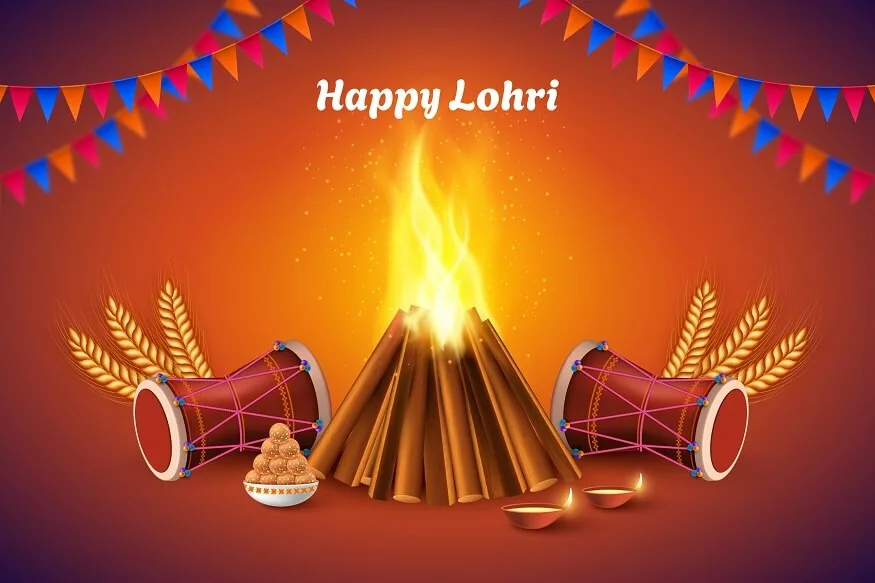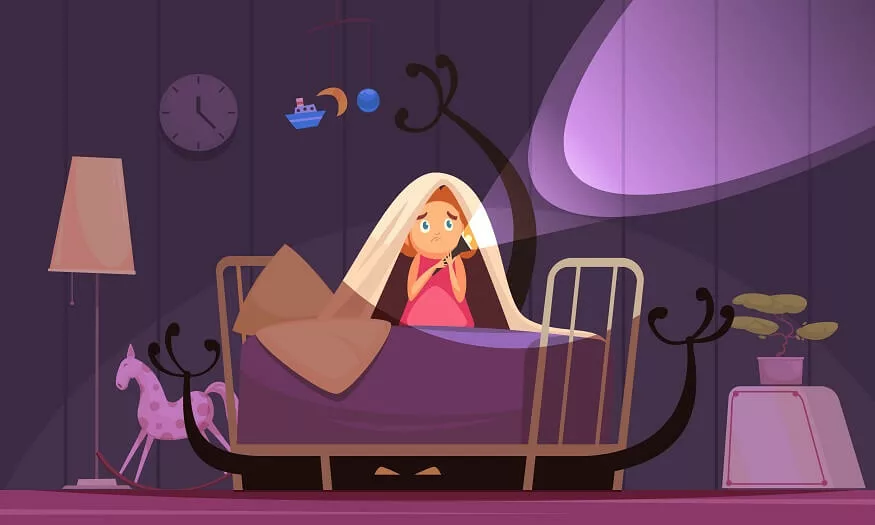Lohri, a popular North Indian festival, marks the end of winter and the onset of longer days. Celebrated primarily in the Punjab region, Lohri holds great cultural and agricultural significance. The festival is a joyful occasion where communities come together to express gratitude for the bountiful harvest and welcome the warmth of the sun. In this article, we will explore how Lohri is celebrated, and its significance, and share some delightful stories for children to enrich their understanding of this vibrant festival.
Celebrating Lohri
Lohri is usually celebrated on January 13 each year, and preparations for the festival begin well in advance hence Lohri 2024 will also be celebrated on the same day.
Bonfires
The central element of Lohri celebrations is the bonfire. Families and communities gather around a bonfire, known as the ‘Lohri di ag,’ in the evening. This bonfire symbolises the end of winter and the triumph of light over darkness. People throw til (sesame seeds), gur (jaggery), and rewri (sesame sweets) into the fire while singing traditional folk songs. The warmth of the bonfire is not only physical but also spiritual, fostering a sense of unity and camaraderie among the participants.
Feasting
Lohri is synonymous with delicious food. Families prepare a special meal comprising traditional Punjabi dishes such as makki di roti (cornbread) and sarson da saag (mustard greens). Gajak (sesame and jaggery sweet) is a popular sweet dish enjoyed during Lohri. The communal feast brings people together, strengthening the bonds of family and community.
Dances and Music
Folk dances like Bhangra and Gidda are an integral part of Lohri celebrations. Young and old alike join in the rhythmic movements, expressing joy and gratitude. The beats of the dhol (drum) and the lively tunes of traditional songs add to the festive spirit. Dressed in vibrant and colourful attire, participants dance around the bonfire, creating an enchanting spectacle.
Also Read: Significance, Activities and Benefits of Dance and Movement For Preschoolers
Significance of Lohri
Lohri holds immense significance, both agriculturally and culturally.
Agricultural Significance
Lohri marks the culmination of the winter solstice when the days start becoming longer, bringing hope for a prosperous harvest season. Farmers celebrate the festival to express gratitude for the bounty provided by the land. The festival is particularly associated with the harvest of winter crops, especially sugarcane, which is why jaggery and products made from sugarcane feature prominently in Lohri celebrations.
Cultural Significance
Lohri is not just a harvest festival; it is a celebration of life, fertility, and the triumph of good over evil. The bonfire, a central element of Lohri, is believed to drive away the darkness and evil spirits. Lighting the bonfire symbolises the victory of light and warmth, fostering a sense of hope and positivity as people welcome the longer days and the promise of spring.
Lohri Stories for Children
- The Story of Sundri and Mundri:
- Dulla Bhatti – The Folk Hero
Legend has it that there were two sisters named Sundri and Mundri who lived in a village. One day, they went to fetch water from the well and encountered a group of men singing songs and celebrating. The sisters were curious and asked about the occasion. The men explained that they were celebrating Lohri, a festival that marks the end of winter and the beginning of a new season. Sundri and Mundri, inspired by the joyous celebration, decided to start celebrating Lohri in their village. The story teaches children about the spirit of sharing joy and the importance of community celebrations.
Another popular story associated with Lohri is that of Dulla Bhatti, a Punjabi folk hero known for his acts of generosity. Dulla Bhatti would rescue poor girls from being forcibly married off and ensure they had a proper dowry. During Lohri, children often sing folk songs praising Dulla Bhatti’s deeds while going from door to door, symbolising the tradition of giving and sharing during the festival.
Also Read: 7 Festivals in India for Children To Learn
How Can Children Celebrate Lohri
Here are some suggestions on how children can celebrate Lohri:
- Craft Activities:
- Traditional Attire:
- Sing Lohri Songs:
- Dance to Folk Tunes:
- Storytelling Sessions:
- Create a Family Lohri Scrapbook:
- Community Service:
- Lohri Games: Organise simple games related to Lohri, such as a sack race or a traditional game of kabaddi. This adds a playful element to the celebration, allowing children to have fun while embracing the festive spirit.
Encourage children to engage in Lohri-themed craft activities. They can create paper bonfires, decorate them with bright colours, and even add small cutouts of traditional Lohri items like sesame seeds, jaggery, and rewri. Crafting provides a hands-on way for children to express their creativity and learn about the festival’s symbols.
Dressing up in traditional Punjabi attire adds an authentic touch to the celebration. Children can wear vibrant salwar kameez or kurta pyjamas, enhancing the festive atmosphere. You can involve them in choosing their outfits and explaining the significance of traditional clothing.
Teach children popular Lohri songs and encourage them to sing along. You can find age-appropriate songs that convey the spirit of the festival. This not only adds to the festive mood but also helps children connect with the cultural aspect of Lohri.
Organise a mini dance session featuring traditional Punjabi folk dances like Bhangra and Gidda. Children can learn simple dance steps and perform them around a makeshift bonfire. This lively activity not only promotes physical activity but also introduces children to the cultural significance of dance in Lohri celebrations.
Share age-appropriate Lohri stories with children to help them understand the festival’s cultural and historical significance. You can narrate the tales of Sundri and Mundri or Dulla Bhatti, explaining the lessons of sharing, kindness, and the triumph of good over evil.
Encourage children to document their Lohri celebrations by creating a family scrapbook. They can take pictures, write about their experiences, and include drawings or crafts. This not only becomes a cherished memory for the family but also allows children to express their feelings and thoughts about the festival.
Instil the values of giving and community service by involving children in charitable activities during Lohri. They can collect warm clothes or blankets to donate to those in need, reinforcing the spirit of generosity and compassion.
EuroSchool sends good wishes on the festival of Lohri to spread warmth, happiness, and positivity in the hearts of those who celebrate it.










